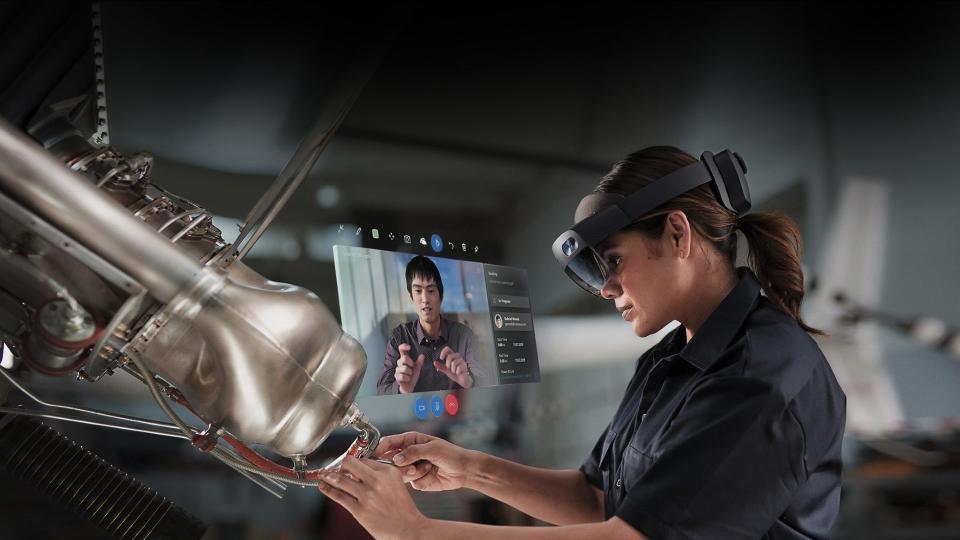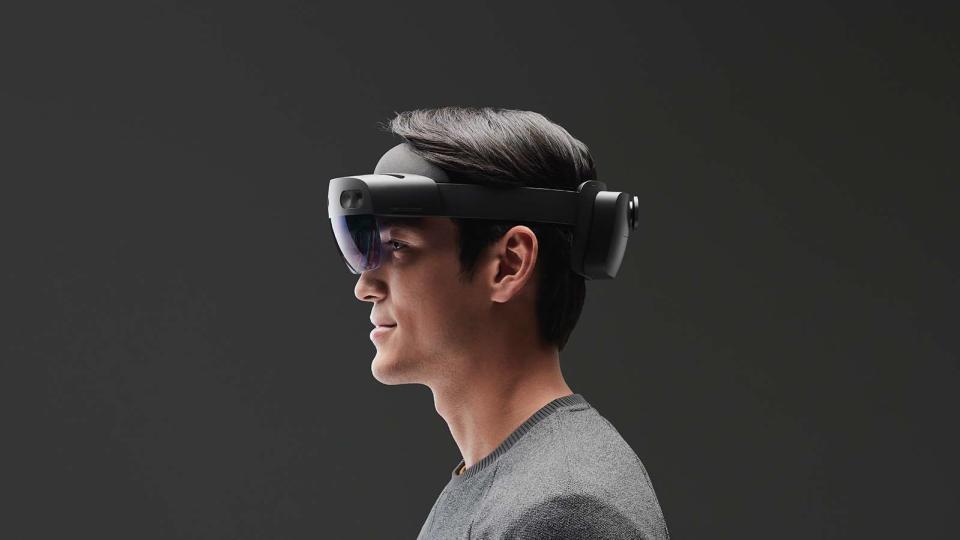Microsoft's HoloLens Creeps Into Apple and Google's Ecosystems
Microsoft (NASDAQ: MSFT) recently unveiled its second generation HoloLens, which is more powerful than its predecessor but -- with a $3,500 price tag -- still squarely aimed at developers. That announcement likely disappointed tech enthusiasts, who had been waiting nearly three years for a mainstream consumer launch.
However, Microsoft also introduced two new mobile apps that will bring some of its HoloLens features to iOS and Android devices. Could these apps help Microsoft challenge Apple (NASDAQ: AAPL) and Alphabet's (NASDAQ: GOOG) (NASDAQ: GOOGL) Google in the nascent augmented reality (AR) market?

Image source: Microsoft.
Taking a look at Microsoft's new apps
Project Visualize 365 for iOS lets sales professionals create scaled-down holographic models of large products like vehicles and heavy machinery. The app will initially launch on iOS before arriving on the HoloLens.
Remote Assist for Android lets users collaborate with others by letting them "see" through their eyes via a smartphone camera and draw AR annotations on the screen. It offers the same features as the Hololens-based version launched last year.
Microsoft's focus on the enterprise market differs from Apple and Google's focus on mainstream consumers. Apple's ARKit and Google's ARCore, which both launched last year, are both development platforms that encourage developers to create mobile AR apps for mainstream users.
Top ARKit apps on iOS include IKEA's furniture-placing app, various measurement apps, and games like Lego Studio. Popular ARCore apps include AR Stickers for Pixel devices and games like MoleCatch AR. These apps are all aimed at boosting mainstream awareness for AR apps rather than simplifying tasks for enterprise users.
Understanding Microsoft's strategy
Therefore, it's unlikely that either Apple or Google is concerned about Microsoft's new HoloLens apps.
However, they should still note that Microsoft is leveraging its stronger position in the enterprise market -- which is supported by Windows, Office, Dynamics, and Azure -- to promote the use of HoloLens and AR applications (which have native support in Windows 10) to enterprise customers. Since Microsoft doesn't own a major mobile OS like iOS or Android, it needs to launch HoloLens apps on those platforms to maintain a mobile presence.

Image source: Microsoft.
That makes Microsoft's HoloLens apps the latest extension of its long-term mobile strategy, which includes killing off Windows Phone, launching a wide variety of first-party mobile apps (including Office, Outlook, and OneDrive) for iOS and Android, and encouraging Android OEMs to pre-install its apps as alternatives to Google's services.
The AR market remains tiny, but Apple and Google could both launch phone-based or stand-alone AR headsets in the near future. Launching AR apps for iOS and Android could make it easier for Microsoft to launch new AR apps for those devices as well.
Why isn't Microsoft focusing on mainstream consumers?
Microsoft's initial demonstration of the HoloLens dazzled mainstream consumers with its AR version of Minecraft. However, Microsoft limited its AR focus on the enterprise market for three reasons.
First, mainstream consumers repeatedly rejected "mainstream" AR headsets like Google Glass due to privacy concerns and awkward aesthetics. Second, mainstream consumers can use smartphones for most AR apps, but companies can customize headsets for specific hands-free tasks.
Lastly, the technology still hasn't reached a cost-effective point for bulk sales to mainstream consumers. Therefore it's smarter to build a niche following with enterprise customers, let the devices gain a workplace following, and wait for component prices to drop and the underlying technology to improve. That's why Google launched its second version of Glass for enterprise customers only.
This doesn't mean that Microsoft won't ever launch a consumer version of the HoloLens. One of its recent patent filings revealed a "miniaturized" HoloLens tucked into a pair of sports sunglasses with built-in headphones, which could be an early concept for a mainstream device.
The road ahead
Microsoft isn't declaring war on Apple and Google with its new HoloLens apps for iOS and Android, it's merely expanding its mobile reach on both platforms and trying to convince more enterprise users to test its AR apps -- which could lead to more orders for the new HoloLens.
These efforts won't move the needle for Microsoft anytime soon, but they could help it stay ahead of the tech curve as demand for holographic applications takes off.
More From The Motley Fool
Suzanne Frey, an executive at Alphabet, is a member of The Motley Fool's board of directors. Teresa Kersten, an employee of LinkedIn, a Microsoft subsidiary, is a member of The Motley Fool's board of directors. Leo Sun owns shares of Apple. The Motley Fool owns shares of and recommends Alphabet (A shares), Alphabet (C shares), and Apple. The Motley Fool owns shares of Microsoft and has the following options: long January 2020 $150 calls on Apple and short January 2020 $155 calls on Apple. The Motley Fool has a disclosure policy.
